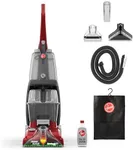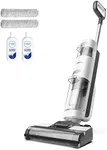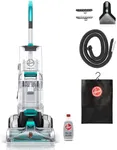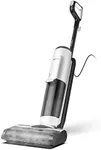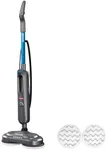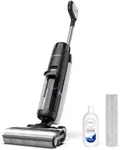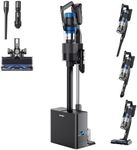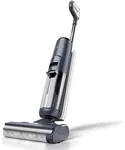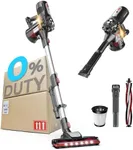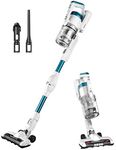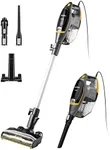Buying Guide for the Best Floor Cleaning Machines
Choosing the right floor-cleaning machine can make a significant difference in maintaining the cleanliness and appearance of your floors. The right machine will depend on the type of flooring you have, the size of the area you need to clean, and your specific cleaning needs. Understanding the key specifications of floor-cleaning machines will help you make an informed decision and ensure you get the best fit for your requirements.Type of MachineFloor-cleaning machines come in various types, including vacuum cleaners, floor scrubbers, sweepers, and polishers. Each type is designed for specific cleaning tasks. Vacuum cleaners are ideal for removing dust and debris, floor scrubbers are great for deep cleaning hard floors, sweepers are used for larger debris, and polishers are perfect for giving floors a shiny finish. Consider the type of flooring and the cleaning tasks you need to perform to choose the right type of machine.
Power SourceFloor-cleaning machines can be powered by electricity, batteries, or even manually. Electric machines are typically more powerful and suitable for continuous use, but they require access to power outlets. Battery-powered machines offer more mobility and are ideal for larger areas without many power outlets. Manual machines are less expensive and require no power source, but they are best for smaller areas and lighter cleaning tasks. Choose the power source based on the size of the area you need to clean and the availability of power outlets.
Cleaning Path WidthThe cleaning path width refers to the width of the area that the machine can clean in a single pass. A wider cleaning path means you can cover more area in less time, making it ideal for larger spaces. However, machines with a narrower cleaning path are more maneuverable and better suited for smaller or more cluttered areas. Consider the size and layout of the area you need to clean when choosing the cleaning path width.
Tank CapacityFor machines that use water or cleaning solutions, such as floor scrubbers, the tank capacity is an important specification. A larger tank capacity means you can clean for longer periods without needing to refill, which is beneficial for larger areas. However, larger tanks can make the machine heavier and more difficult to maneuver. Choose a tank capacity that balances your need for continuous cleaning with the ease of handling the machine.
Noise LevelThe noise level of a floor-cleaning machine can be an important consideration, especially if you need to use it in noise-sensitive environments like offices, schools, or hospitals. Machines with lower noise levels are less disruptive and more suitable for such settings. Noise levels are usually measured in decibels (dB), and a lower dB value indicates a quieter machine. Consider the environment in which you will be using the machine and choose one with an appropriate noise level.
Weight and ManeuverabilityThe weight and maneuverability of a floor-cleaning machine affect how easy it is to use and transport. Lighter machines are easier to move and handle, making them suitable for smaller areas or for users who may have difficulty with heavier equipment. Heavier machines may offer more stability and power but can be more challenging to maneuver. Consider your physical capabilities and the ease of use when choosing the weight and maneuverability of the machine.
Additional FeaturesSome floor-cleaning machines come with additional features such as adjustable handles, multiple cleaning modes, or attachments for different cleaning tasks. These features can enhance the versatility and convenience of the machine. Think about any specific needs you have, such as cleaning different types of flooring or reaching tight spaces, and look for machines that offer features to meet those needs.
